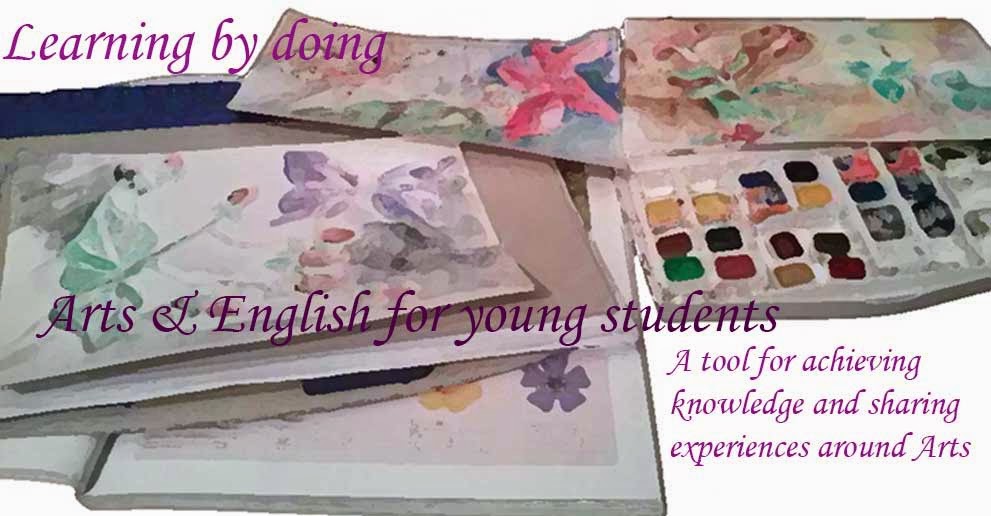 http://corcholat.com/!PDi
http://corcholat.com/!PDi
Friday, December 9, 2011
Thursday, December 8, 2011
Elements of Art works. Analyzing pictures
Elements of Art
The elements of art are the building blocks used by artists to create a work of art.
and width.
feeling of depth. Real space is three-dimensional; in visual art, when we create
the feeling or illusion of depth, we call it space.
is), and intensity (how bright or dull it is).
• White is pure light; black is the absence of light.
• Primary colors are the only true colors (magenta, cyan blue, and yellow). All other
colors are mixes of primary colors.
• Secondary colors are two primary colors mixed together (green, red,
violet).
• Intermediate colors, sometimes called tertiary colors, are made by mixing
a primary and secondary color together. Some examples of intermediate
colors are yellow green, blue green, and blue violet.
• Complementary colors are located directly across from each other on the
color wheel (an arrangement of colors along a circular diagram to show
how they are related to one another). Complementary pairs contrast
because they share no common colors. For example, red and green are
complements, because green is made of blue and yellow. When complementary
colors are mixed together, they neutralize each other to make
brown.
a drawing of a porcupine may look prickly, but if you touch the drawing, the
paper is still smooth.
MORE LINKS:About composition http://artsedge.kennedy-center.org/educators/how-to/from-theory-to-practice/formal-visual-analysis.aspx
GLOSSARY
http://mdk12.org/instruction/curriculum/arts/vsc_visualarts_glossary.pdf
A very good example
http://www.artyfactory.com/art_appreciation/still_life/chardin/chardin.htm
The elements of art are the building blocks used by artists to create a work of art.
- Line is a mark with greater length than width. Lines can be horizontal, vertical,
- Shape is a closed line. Shapes can be geometric, like squares and circles; or
and width.
- Forms are three-dimensional shapes expressing length, width, and depth. Balls,
- Space is the area between and around objects. The space around objects is often
feeling of depth. Real space is three-dimensional; in visual art, when we create
the feeling or illusion of depth, we call it space.
- Color is light reflected off of objects. Color has three main characteristics: hue
is), and intensity (how bright or dull it is).
• White is pure light; black is the absence of light.
• Primary colors are the only true colors (magenta, cyan blue, and yellow). All other
colors are mixes of primary colors.
• Secondary colors are two primary colors mixed together (green, red,
violet).
• Intermediate colors, sometimes called tertiary colors, are made by mixing
a primary and secondary color together. Some examples of intermediate
colors are yellow green, blue green, and blue violet.
• Complementary colors are located directly across from each other on the
color wheel (an arrangement of colors along a circular diagram to show
how they are related to one another). Complementary pairs contrast
because they share no common colors. For example, red and green are
complements, because green is made of blue and yellow. When complementary
colors are mixed together, they neutralize each other to make
brown.
- Texture is the surface quality that can be seen and felt. Textures can be rough or
a drawing of a porcupine may look prickly, but if you touch the drawing, the
paper is still smooth.
MORE LINKS:About composition http://artsedge.kennedy-center.org/educators/how-to/from-theory-to-practice/formal-visual-analysis.aspx
GLOSSARY
http://mdk12.org/instruction/curriculum/arts/vsc_visualarts_glossary.pdf
A very good example
http://www.artyfactory.com/art_appreciation/still_life/chardin/chardin.htm
Tuesday, December 6, 2011
SIMILARITY SHAPES
There are many shapes that they are very simility of other:

BALL AND WHEEL


BULB AND PEAR


PYRAMIDE AND SQUAD
Sunday, December 4, 2011
Subscribe to:
Posts (Atom)




